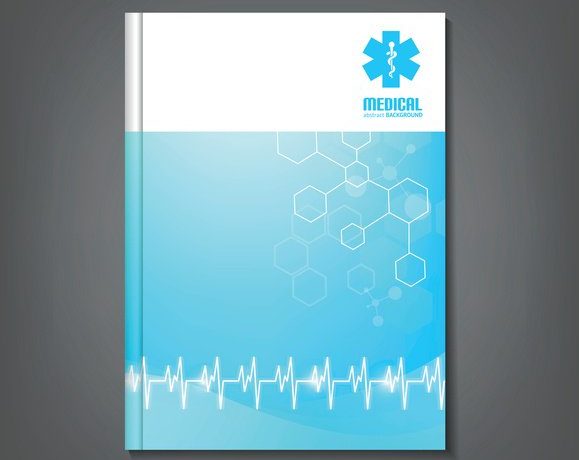3 Career Tools for Emergency Medicine Physicians

There was a time in the not-too-distant past when emergency medicine physicians relied heavily on stethoscopes, blood pressure monitors, experience and maybe a phone call to a trusted colleague to treat any and all cases that walked (or rolled) through the door.
Not anymore.
Today’s emergency medicine physicians have gone high tech. Smartphones have become nearly ubiquitous in hospitals across the country, with eight out of every 10 doctors admitting to using them for work, according to a recent study conducted by Kantar Media.
And those smartphones aren’t only being used to communicate with other physicians or keep track of appointments. They’re being used to access treatment guidelines, calculate complicated medical formulas, perform clinical ultrasound examinations at the bedside and more.
Yes, today’s emergency medicine physicians have more tools than ever at their fingertips. Here’s a look at three of the best apps available:
1) EMRA PressorDex
The EMRA PressorDex app is sure to be found in any list of essential mobile tools tools for emergency medicine physicians.
It’s a complete therapeutic guide to the seemingly endless list of pressors, vasoactive drugs, continuous infusions and other medications that are necessary to treat patients who are critically ill.
What makes the app so effective is that it is written by emergency medicine physicians for emergency medicine physicians. It’s clear, concise and easy to use even during the busiest of shifts.
EMRA PressorDex costs $16.99 and is available for iOS. Learn more and download the app.
2) ERres
The ERres app is commonly referred to as the “Swiss army knife” of apps for emergency medicine physicians because it’s so easy to use and includes so many practical and valuable tools–especially when things get hectic.
The app is perfect for bedside use, featuring various calculators, lists of medicine, algorithms, decision rules, clinical policies and core content that is frequently referenced by emergency providers.
The ERres app is designed to allow you to make respond rapidly to emergency situations with the best possible information. In some situations, that’s the best you can hope to accomplish.
ERres costs $4.99 for iOS users and $3.99 for Android users. Learn more and download the app for your iPhone or Android.
3) SonoSupport
Perhaps no tool is as valuable in the emergency department than the bedside clinical ultrasound. It allows physicians to identify injuries that aren’t apparent during initial physical exams–bleeding into the peritoneal, pleural or pericardial spaces.
Unfortunately, executing a bedside ultrasound while in the throes of an emergency can sometimes prove difficult–and that’s where the SonoSupport app comes in.
The app provides all of the information needed to perform clinical exams at the bedside, including:
- Easy-to-use guides and summaries of when and why to perform specific scans
- Clear and concise step-by-step instructions for obtaining the needed images
- Advice for selecting the proper probe and placing the transducer to ensure image quality
- Samples of high-resolution normal sonographic anatomy as well as notable pathology
- Critical image checklists
The SonoSupport app costs $9.99 and is available for iOS. Learn more and download the app.
**Please note these apps are not endorsed by Elliot Health System and are being featured in order to bring attention to new medical technology within the industry. If you’d like to learn about more physician tools, read our physician app article here.
—
Would you like to read more blogs like this? Subscribe!
![]()
What Exactly IS a Community Hospital?

Community hospital. For many people, the term conjures up images of a small, local, well-run quaint health care facility complete with friendly staff and kind doctors who all possess a folksy bedside manner. Reasonable sounding, isn’t it? But is there a formal definition, a generally accepted standard of what constitutes a community hospital?
The American Hospital Association defines community hospitals as all non-federal, short-term, general, and other special hospitals including academic medical centers or other teaching hospitals. Interestingly enough, the definition included college and prison infirmaries prior to 1972. But, does this rather sterile definition truly explain what a “community hospital” is?
The AHA also
breaks down community hospitals further, distinguishing between rural community hospitals and urban community hospital.
Or should we rely on Becker’s Hospital Review list of 100 Great Community Hospitals which only includes those that have fewer than 550 beds and minimal teaching programs?
Perhaps we should look at Medicare, which defines such a facility as any hospital:
- Located more than 35 road miles from another hospital
- That, by reason of factors such as the time required for an individual to travel to the nearest alternative source of appropriate inpatient care…location, weather conditions, travel conditions, or absence of other like hospitals…is the sole source of inpatient hospital services reasonably available to individuals in a geographic area who are entitled to benefits under Medicare or,
- Designated as an essential access community hospital under Medicare.
Clearly, then, there is no hard and fast rule as to what constitutes a community hospital. There are however, certain characteristics some would argue they all share. These likely include:
1. Communication: Prioritization of managing patient expectations.
In order for a community hospital to truly be a part of the community it serves, it must establish open, honest and clear communication that is conducive to a dialog between it and the people it serves. People should have a complete understanding of what the facility provides (and doesn’t provide), what the policies are regarding access, treatment protocols, payment requirements and other issues associated with health care. The hospital board and staff should welcome questions, suggestions, concerns and general comments for the stated purpose of ensuring that the community is provided the best care and treatment the facility can provide.
2. They follow the money, but they ensure the money follows the health care needs of the community.
Clearly, no healthcare facility can operate at a financial loss for any significant period of time. Donors must be courted, other funding sources secured. However, a community hospital must ensure that it attends to the needs of its patients in addition to focusing on the bottom line. Making financial decisions that maximize the resources of the facility and the staff that work there should be a top priority. Reputation is built on more than fundraising success and sparkling new equipment for its own sake – spending should have a specific, care-based focus.
Local governance.
This doesn’t necessarily mean that the hospital is completely governed by the community in which it is located, simply that local facility management has meaningful input into how the hospital is run rather than being dictated to by the corporation that owns the hospital.
Location, location, location.
Joe Lupica, chairman of Newpoint Healthcare Advisors, succinctly sums up the point: “A community hospital is a place where care can come to a patient, instead of forcing a patient to drive far away for care.” The community must not only be served, it must be made to feel that it is being served.
—
Elliot Health System is a community hospital. If you’d like to learn more about provider careers with us, click below.
![]()
The Pros and Cons of Becoming a Physician Assistant Versus an MD

The country needs you.
There’s a shortage of medical professionals in the United States, and everyone from the president to hospital administrators has put out the call for smart people to step forward and join the ranks of the caring and dedicated individuals who help keep the country healthy.
So which one are you going to be–a physician assistant or a medical doctor?
Both play critical roles promoting health and wellness by performing exams, diagnosing illnesses and prescribing treatments. Both professions are well-respected. Both are in high demand.
But they come with different expectations, requirements and pressures.
If you are considering answering the call for more healthcare professionals, take a look at this list of pros and cons related to becoming a physician assistant versus a medical doctor:
The Pros
- Fewer education requirements. Between an undergraduate degree, medical school and a residency, it can take up to 11 years before you become a medical doctor. On the other hand, it typically takes only six to seven years to become a physician assistant.
The total amount of training required for physician assistants is roughly 12,400 hours. For medical doctors, it is roughly 34,000 hours.
- Student loans. Naturally, the less time you spend in post-secondary courses, the less money you’ll have to pay for tuition. The average medical school graduate has about $180,000 in student loan debt upon graduation, according to the Association of American Medical Colleges.
A study conducted by the Physician Assistant Education Association found that 75 percent of physician assistant students expected to take on around $50,000 in student loan debt before graduating.
A smaller debt load after graduation can go a long way towards improving your overall quality of life while you are establishing yourself in your new career.
- Flexibility. One of the biggest advantages of becoming a physician assistant is the professional flexibility the profession offers. After achieving your license, you can easily shift from one medical specialty to another–from an internist to a pediatrician, for example–without going back for additional training.
This level of flexibility helps ensure that you can continue to challenge yourself and grow professionally, without leaving the hospital for which you work.
- Teamwork. There is a movement afoot in the healthcare industry towards patient-centered, team-based primary care–and physician assistants are an important part of the team. You’ll work with doctors, nurses, licensed practical nurses and others to ensure that patients receive the best care possible.
- Financial rewards. According to a recent article published by Forbes, the average compensation for physician assistants in the United States is $100,000. That’s nearly double what the average American household makes per year, according to the U.S. Census Bureau.
The Cons
- Limits on your functions. Even though many physician assistants have the ability to care for patients outside of the clinic or hospital setting, there are rules that prohibit them from doing so.
- Lack of understanding. Even though physician assistants have been caring for patients since the mid-1960s, there is still a lack of understanding among some patients about the role they play in health care. Many physician assistants find that they spend a lot of time educating patients about what they do and how they do it.
- Lack of autonomy. If you’re a physician assistant, you will be able to work independently with patients, but your work will be closely supervised by a doctor. You also can’t open your own office–but that just means you’ll always be part of a team.
—
Have you already succeeded in becoming a physician assistant? Consider what Elliot Health System has to off you.
![]()
Top Journals that Matter to Primary Care Physicians

Never before have more words been so readily available.
With the click of a keyboard or the swipe of a smartphone screen, primary care physicians put their hands on a seemingly unlimited amount of information.
Blogs, magazines and online aggregators offer around-the-clock access to research, breaking news and human interest stories.
But should physicians really be getting their news about research from websites run by 24-hour cable networks?
The problem with having so much information immediately available is that it can be difficult to measure the quality of the words. That’s why many primary care physicians are eschewing online information sources in favor of tried and true, peer reviewed, accurate and ethical medical journals, which have been delivering trusted news about research, trends and treatments for centuries.
Here’s a look at the top journals that matter the most to primary care physicians:
New England Journal of Medicine (NEJM)
The name and the acronym are synonymous with excellence. It’s by far the most well-respected and well-read general medicine journal available. Research covers all medical specialties, and all of the 5,000 article submissions the journal receives each year that actually get published go through an extensive peer review process, revisions and a statistical review.
In short, the NEJM is a journal primary care physicians simply must read if they want to stay abreast of emerging trends, research and discoveries.
Journal of Primary Care & Community Health
Primary care physicians are on the front lines of addressing public health concerns, and the Journal of Primary Care & Community Health is right there with them. The quarterly journal, which is currently transitioning to an open access format, offers peer-reviewed articles about the practice, impact and outcomes of community health programs.
It’s a great tool and a must-read journal for physicians who are interested in bridging the gap between medicine and public health at a grass-roots level.
Nature
Science waits for no one. That’s why it is imperative that primary care physicians read Nature, a medical journal that publishes weekly and features the latest findings in science research. Nature is one of the most difficult journals in which to be published, and it covers topics ranging from chemistry to evolution.
Many, if not all, of the top medical journalists in the country rely heavily on Nature for story ideas. So if you want to know what your patients are likely to be hearing (and have the real story for yourself), read Nature.
The Journal of the American Medical Association (JAMA)
With more than 1.2 million people receiving its table of contents via email, no other medical journal is as widely circulated. JAMA is a journal comprised of the top articles from the American Medical Association’s other journals, including JAMA Cardiology, JAMA Dermatology, JAMA Pediatrics and JAMA Psychiatry. In other words, its the perfect news aggregator for primary care physicians.
Read JAMA and sign up to have its table of contents delivered to your email inbox for free.
American Family Physician
Published by the American Academy of Family Physicians, AFP includes articles from clinicians with the experience and wisdom to provide proven advice to their peers. The editors strive to find articles that provide a family medicine perspective and approaches to common clinical conditions.
American Family Physician is what you want to read if you’re looking for practical wisdom that actually applies to your day-to-day practice of medicine.
Annals of Medicine
For those interested in research, there is the Annals of Medicine. It’s delivers rapid publication of the latest peer-reviewed research related to medicine, from the bench to the bedside and back again.
—
If you are interested in reading blogs like this one to supplement your journal reading, feel free to subscribe.
![]()
Why Patients Value Their Primary Care Physician

There are few personal relationships more influential on a person’s quality of life than the one they have with their primary care physician. The average individual may not necessarily view it in those terms, but it’s true. People place their most important “possession” – their health – in the hands of their doctor, thereby assigning tremendous value to that health care professional. But why? Upon what factors is such value based?
There are any number of reasons someone would value their primary care physician. Trust is, of course, the fundamental component of any successful relationship. But trust is not organic, it doesn’t just magically appear when people interact. There are reasons that people trust one another and reasons they don’t. Some seem quite reasonable or at least relevant. Take, for example, one of the most common: My doctor doesn’t listen. Others, not so much: My doctor makes too much money.
So how does a primary care physician build the level of trust necessary to nurture a long-term, mutually beneficial relationship? The following are among the factors that seem most crucial to establishing the requisite level of trust:
1. Remember that your priorities often differ from those of your patients.
While the health of your patient is one priority you share, there are others you don’t. Primary among these, perhaps, is your focus on running a successful medical practice. Not that there’s anything wrong with that, of course. But, if your patients sense that they are simply revenue producers instead of individuals you care about personally, trust becomes difficult to maintain. As passe as it sounds, no one wants to be treated as if they’re simply a number.
2. It’s a personal professional relationship.
In an informal survey conducted via Twitter by Ashish K Jha, physician and health policy researcher, he got the following results:

The top 3 responses – Empathetic, good listener, compassionate/caring/kind – all relate to communication. Not surprisingly, the ability of a primary care physician to effectively communicate with his or her patient is considered a crucial factor in determining what makes a good doctor. Subjective? Of course. But, understandable nonetheless.
3. Competence.
What constitutes competence? Is it simply the technical ability of a physician or are there other components as well? Probably the latter. For example, you may be the most skilled primary care physician in your city when it comes to providing health care, but if you are often preoccupied, constantly late, spend very little time speaking with your patients or have a sour personality, you may not be considered very competent by your patients. Perception is reality and that’s especially true when it comes to how your patients view you. If you conduct your practice in an unprofessional, undisciplined and/or disorganized manner, it’s likely you will not be perceived as very competent.
There are, of course, other factors that effect whether someone values their doctor. However, all of them involve whether the patient feels that they can trust you. There’s an old saying along the lines of “familiarity breeds contempt.” When it comes to patients and their primary care physician, however, it’s much more likely that familiarity breeds confidence, cooperation and comfort. And isn’t that just what the doctor ordered?
—
Are you a primary care physician who wants to work for a community hospital? Apply to work for Elliot Health System!
![]()
What Do Community Hospitals Offer Physicians Career-wise?

What if there was a hospital that was large enough to allow you to grow as a medical professional, but community-oriented enough to ensure that you don’t get lost in the shuffle? A place where physicians have the full support of the administration — because most of the hospital’s leadership are former providers.
If this sounds far fetched, you probably haven’t worked in a community hospital.
Many physicians aspire to work in country’s largest hospitals. They’re attracted to the complex cases, large paychecks and opportunities to conduct cutting edge research.
But, if they took the time to examine community hospitals, they’d likely find all those things and more.
According to the American Hospital Association, there are more than 5,600 hospitals in the United States. Most are community hospitals. Many are the largest hospitals in the region and have cutting edge technology, specialty centers and opportunities for physicians to participate in research.
They also provide opportunities to lead, shape the future of healthcare and enjoy a high quality of life.
Here’s a look at what community hospitals offer physicians and why a community hospital might be a good fit for you.
Efficiency
No, not the efficiency that is required by insurance companies and hospital administrators who are entirely focused on the bottom line. The type of efficiency you’ll find at many community hospitals comes in the form of streamlined performance and coordination between providers.
This is far too often be chalked up to proximity; the distance between wards or operating rooms is often shorter in community hospitals. But in reality, the increased efficiency is a product of less bureaucracy, which can be quite pervasive in large research-based hospitals but less so at community hospitals. Smaller hospitals typically have fewer administrators forcing paperwork on physicians. As a result that makes doctors much more efficient–especially during emergency situations.
Not dealing with unending bureaucracy is an intangible benefit of working at a community hospital.
Financial Health
Most newly minted physicians have accumulated more than $180,000 in student loan debt by the time they graduate from medical school, according to the Association of American Medical Colleges. It can take decades of $2,000-a-month payments before physicians can finally enjoy the financial rewards of their hard work.
However, if physicians find their first job at a community hospital, they may be able to enroll in a student loan repayment program that pays $75,000* or more of their loan balance simply for committing three years to a community hospital.
Quickly reducing student loan debt while gaining valuable hands-on experience is one of the biggest benefits of working at a community hospital.
*Note: Make sure to check with individual hospitals regarding loan forgiveness or repayment policies. Every institution is different and the details in this article are not specific to any one community hospital.
Experience
The best physicians possess practical wisdom, which is best described as the ability to leverage theory and practice to ensure the best possible outcomes for patients.
The only way to gain practical wisdom is through experience and community hospitals offer ample opportunities to get real-world experience sooner rather than later.
Many physicians at community hospitals are presented with complex cases they are not likely to come across in medical school or during a residency at a large urban hospital where there are layers of specialists and longtime physicians ready to provide care.
Because the hospitals are smaller and typically don’t have as many specialists, community hospital physicians get to be “Jacks and Jills-of-all-trades.” They get to treat patients with a wide variety of symptoms and illnesses who otherwise might be passed off to specialists in larger hospitals.
This experience often proves invaluable and makes physicians in community hospitals indispensable, which is why so many decide to build long, rewarding careers for themselves at community hospitals–long after they have paid off their student loans.
—
Would you like to investigate community hospital careers within Elliot Health System?
![]()
Start Your Week Off Right With Fascinating Medical News Stories

Thanks to the presidential election, it has been a while since the medical industry has been “above the fold,” as they say in the journalism world. But, that doesn’t mean there hasn’t been any news about medical research, trends or treatments.
In fact, there have been some pretty important stories written about the medical industry over the past month. Here’s a look at five of the most fascinating medical news stories you may have missed while the world was preoccupied with the race for the White House:
Mini lungs transplant breathes life into respiratory research
Researchers may soon have a new tool in the effort to learn more about respiratory disease, which is responsible for nearly one in five deaths around the world. Scientists at the University of Michigan have successfully transplanted lab-grown mini lungs into mice, according to a story in Science Daily.
The 3-D models of lungs were created from stem cells and transplanted into immunosuppressed mice, where the structures not only survived, but also grew and matured.
Researchers say the transplanted mini-lungs were virtually indistinguishable from human adult tissue, which is important because it will allow scientists to test and screen drugs, gain a better understanding of gene function and possibly generate transplantable tissue.
Read more about the mini-lung breakthrough on the University of Michigan website.
Hope in battle against Zika virus
The Zika virus isn’t making headlines like it did last summer, but researchers are still busy looking for ways to combat the illness’s devastating effects–and they may have made an important breakthrough.
Researchers at Vanderbilt University Medical Center and Washing University School of Medicine in St. Louis say they have isolated a human monoclonal antibody that “markedly reduced” Zika virus infection in a mouse model.
According to researchers, an antibody called ZIKV-117 protected the fetus in pregnant mice that were infected with Zika.
The breakthrough offers hope to the thousands of people in the United States (including at least 11 in New Hampshire) who have been infected with the virus, according to the U.S. Centers for Disease Control.
Read more about the study in the journal, Nature.
Baby ‘born twice’ survives emergency surgery
In one of the most fascinating and inspiring medical news stories of the year, doctors at Children’s Hospital in Houston successfully removed a fetus from the womb, performed emergency surgery and placed the baby back inside her mother for another 20 weeks.
And it worked.
CNN recently published a story about the baby who was “born twice.” The baby was diagnosed with Sacrococcygeal teratoma when her mother was 16 weeks into the pregnancy. While the condition, which causes a tumor to develop and grow from the baby’s coccyx prior to birth, is fairly common and often treatable after the baby is born, this case presented with complications. The fetus had blood-flow problems that could have led to heart failure.
Physicians made the difficult decision to remove the fetus from her mother and perform the surgery. After placing the fetus back inside the womb, the baby grew normally and was successfully brought into the world at 36 weeks.
That’s the type of inspiring medical news that reminds physicians why they chose a career in medicine–and reminds the world of the value of innovative health care and doctors committed to innovating.
Read more about the baby “born twice” on CNN.com.
—
Would you like to read more medical news roundups like this? Consider subscribing to our blog.
![]()
Your Path to Becoming a Physician Assistant

Physician assistants (PAs) are in high demand throughout the medical field, and that’s only expected to increase over the next decade. Because of the high demand and good median wage, entry into these educational programs is very competitive. Here’s what you need to know about the path to becoming a physician assistant.
Setting Up for Success
Fierce competition for spots means checking into these programs as early as possible after you begin college, preferably sometime during your freshman year. Before entering a program to become a physician assistant, you may need:
- Bachelor’s degree – Most students in physician assistant programs already have a college degree.
- Medical experience – Many programs require hands-on experience (up to three years) in the healthcare field. This experience may be obtained by holding certain positions, such as:
- Paramedic or Emergency Medical Technician (EMT)
- Lab Assistant, Phlebotomist, etc.
- Volunteer with Peace Corps
- Surgical Technician
- Registered Nurse (RN) or Certified Nursing Assistant (CNA)
- Other healthcare-related positions
- College-level coursework in basic science and behavioral science including (but not limited to):
- Anatomy
- Chemistry
- Biology
- Microbiology
- Physiology
Ensuring that you meet these minimum requirements is essential for entry into a program to become a physician assistant. Without the proper preparation, you could miss valuable opportunities in top-notch programs.
What to Expect in a Physician Assistant Program
Most programs take two academic years to complete, but some are longer. During that time, you’ll be educated on a variety of science subjects. You should also expect about 2,000 hours doing clinical rotations. These will likely emphasize primary care in a variety of settings, including clinics, private practices, acute care facilities, and long-term care facilities. You may experience rotations in a variety of fields, as well, including:
- Emergency Medicine
- Pediatrics, Obstetrics and Gynecology
- Family Medicine
- Internal Medicine
- Psychiatry
- General Surgery
Once you’ve completed your program, you can take the Physician Assistant National Certifying Exam, or PANCE. This exam is offered by the NCCPA, or National Commission on Certification of Physician Assistants. Once you successfully pass the PANCE, you can begin using the title PA-C, or Physician Assistant-Certified.
Getting Licensed and Moving Forward
You must be licensed in the state where you intend to practice before you start practicing. States have a variety of requirements for PAs, but every state requires PAs to graduate from an accredited program and successfully pass the PANCE. For national certification, there are continuing requirements, such as 100 hours of CME (continuing medical education) credits completed in every 24-month period. National certification also requires that you take the PANRE (Physician Assistant National Recertifying Exam) once every ten years.
After graduation and certification, you’ll likely be qualified for a number of different job opportunities, from entry-level positions in thriving private practices, to primary caregiver in small clinics, and beyond. PAs can perform a wide variety of healthcare-related tasks, and often work in tandem with other healthcare providers as part of a team that provides patient care. As PAs are more cost-effective than traditional physicians, they can expect to see job offers that run the gamut of healthcare. In fact, they are present and in high demand in every patient-centered healthcare field.
Choosing the PA Path
Working as a PA offers the satisfaction of making a difference in the lives of others. This is a course of action that requires a large investment of time and hard work. It isn’t the path for everyone interested in healthcare, but the numerous, rewarding career opportunities are definitely worth considering.
—
If you’d like to apply for a physician assistant career at Elliot Health System, click below.
![]()
5 Reasons Why a Community Hospital is the Right Long-term Career Move

Community hospitals play an important role in American’s everyday life.
They are anchors, often holding towns, cities and communities together in times of challenge and adversity. They are safe havens for patients during medical emergencies. They are beacons of health and hope for families in the throes of some of the most trying and confusing moments of their lives.
They are also great places to build long, fulfilling and rewarding careers.
According to the American Hospital Association, there are thousands of community hospitals across the country–and not all of them are located in rural areas and small towns. You can find them in suburban areas and even larger cities. Each year, America’s community hospitals serve millions of people from all walks of life and employ thousands of physicians.
While some physicians prefer large teaching or research organizations, others have made the decision to build their careers at community hospitals–and enjoyed long-term success.
Here are five reasons why choosing a community hospital is the right long-term career move:
1) Opportunities
Large hospitals typically deal with a greater number of patients, but unless you are a hospitalist, how many will you actually get to treat?
At a community hospital, there is a greater likelihood of you getting to treat patients from the moment they present to the time they are discharged or the medical condition is addressed. In addition, you will be less likely to have your position as the primary physician usurped by a specialist.
And, if you are a specialist, say a surgeon, you will probably get to do more in the surgical suite–conduct C-sections, set screws in hips and perform a below-knee amputation, for example.
It might seem counter-intuitive, but many physicians find they actually have more opportunities to gain valuable experience at a community hospital.
2) Connections
In a healthcare world that’s largely driven by quotas, time with patients is at a premium. However, many physicians find that they get to build stronger connections with patients at a community hospital because they are smaller and they often have a lower census.
Building meaningful connections with patients can increase job satisfaction, improve outcomes and make a tangible difference your professional life and the personal lives of your patients.
3) Support
Physicians and administrators sometimes don’t see eye-to-eye. After all, physicians are trained to be individualists and make important decisions while on the front lines of patient care.
These traits–combined with the bureaucracy of large, complex organizations–tend to create tension. Over time, the tension can create an atmosphere in which it is no longer fulfilling to practice.
You are simply less likely to run into these types of issues at community hospitals. They’re smaller, have less bureaucracy and often have physicians or former physicians in key leadership positions. They tend to make supporting their physicians part of their missions. Over the course of a long career, this can make all the difference in the world.
4) Quality of life
Work-life balance is hard for doctors to achieve, but it’s often easier when you work at a community hospital.
Commute times tend to be shorter, the cost of living is lower and there are many opportunities to get away from it all that are located closer. The lower stress that comes with working at a community hospital tends to lead to longer, more fulfilling careers.
5) Community
Cities that rely on community hospitals look to physicians for more than just healthcare. They look for civic leadership, philanthropy and ideas about arts and culture.
Yes, at a community hospital, you can join the ranks of the thousands of physicians who have enjoyed long, rewarding careers while playing important roles in their communities.
—
Would you like to join a strong community hospital? Consider a career with Elliot Health System.
![]()
Why Emergency Medicine Physicians Chose the Right Career

They work in some of the most stressful conditions imaginable. They treat more than 100 million patients each year, according to the Centers for Disease Control and Prevent. They never know what types of cases are going to walk or be rolled through the doors. People who cannot speak, hear or see depend on them for life.
And more often than not they succeed at keeping their patients alive.
They are emergency medicine physicians, and their careers are as challenging and exciting as they are rewarding.
Here’s a look at why many emergency medicine physicians don’t hesitate to say they chose the right career:
- Variety. No two days are alike for emergency medicine physicians. According to the CDC, there are more than 136 visits to emergency departments each year in the United States. Of these visits, more than 40 million are injury related, 16.2 million result in hospital admissions, 2.1 million result in admission to critical care units, and more than 2 percent end in a patient being sent to a psychiatric or other type of hospital.
If you are the type of physician who likes variety, you’ll find it in the emergency department. Throughout the course of a single shift, many emergency medicine physicians find that they treat patients who need emergent or urgent resuscitation, interventions, procedures or obstetric care.
- Leadership. Emergency medicine physicians are on the front line of medicine. They are often the first in the country to be faced with emergency public health issues, whether related to chemical dependency, disease, or outbreaks and epidemics.
For these reasons, physicians who work in emergency departments are able to play important leadership roles in addressing public health problems. They are often called upon for leadership in the areas of injury and illness prevention, emergency medical services response and legislative advocacy.
- Relevancy. According to a study conducted by the American College of Emergency Physicians, the number of visits to emergency departments is on the rise. In addition, 44 out of every 100 people in the country visit an emergency department each year, according to the CDC.
Emergency departments are open 24-hours a day; they never close and they don’t turn anyone away. The physicians who work in emergency departments–whether in large, urban areas or smaller communities–are always relevant, in demand and respected for the service and care they provide.
- Flexibility. Because emergency departments are such intense environments, most hospitals allow for a great deal of flexibility when it comes to scheduling. The defined shift work makes scheduling more predictable than that of other specialties, and when you’re off the clock, you’re off the clock.
Emergency medicine physicians rarely carry pagers, unless they are on call, so they can dedicate their time out of the emergency departments to their families, friends, recreational activities or professional development.
- Community. Physicians who practice emergency medicine have created a tight-knit community. Its members have a reputation for being extremely supportive of one another, connecting and collaborating on everything from professional development to research.
In fact, there are four professional associations dedicated to advancing the profession, offering professional development opportunities, conducting research and connecting emergency medicine physicians with one another. They include the Emergency Medicine Residents’ Association, the Society for Academic Emergency, the American College of Emergency Physicians and the American Academy of Emergency Medicine.
- Satisfaction. Physicians, in general, are a hard group to satisfy, but according to Medical Practice Insider, emergency medicine physicians are more contented than those who practice plastic surgery, cardiology, radiology, anesthesiology, orthopedics, urology and general surgery. In fact, the only specialty groups with higher satisfaction rates are pathology, psychiatry and dermatology.
—
If you are interested in an exciting emergency medicine provider career, consider working for Elliot Health System.
![]()














Recent Comments